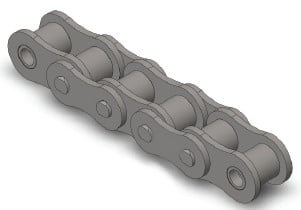? Type of input energy (electric motor, internal combustion engine with mechanical or hydraulic drive).
? Type of gear to become driven.
? Amount of horsepower required to provide suffi cient energy towards the driven shaft.
? Full load speed of your quickest running shaft (rpm).
? Desired velocity of your slow running shaft ( or even the needed velocity ratio). NOTE: If speeds are variable identify the horsepower to become transmitted at every speed.
? Diameters of the drive and driven shafts . . . This value could restrict the minimal number of teeth to the sprockets.
? Center distance of your shafts.
? Note the place and any room limitations that may exist. Generally these limitations are to the greatest diameter of sprockets (this restricts using single strand chains) or the width of the chain (this restricts the usage of multi-strand chains).
? Conditions of your drive such as a determination on the class of load (uniform, moderate or hefty), extreme operating temperatures or chemically aggressive environments needs to be mentioned.
Abbreviations Used in Equations
N Variety of teeth around the large sprocket.
n Quantity of teeth over the small sprocket.
R Speed in revolutions per minute (rpm) in the huge sprocket.
r Pace in revolutions per minute (rpm) in the compact sprocket.
C  Shaft center distance in chain pitches.
Shaft center distance in chain pitches.
HP Horsepower rating of the drive motor or engine.
KW Kilowatt power rating of drive motor or engine if working with metric units.
SF Services Factor